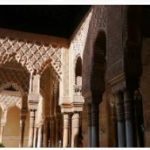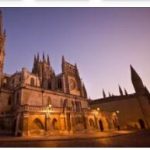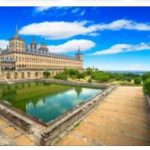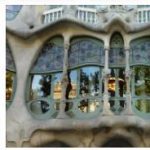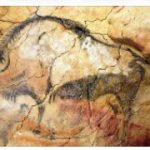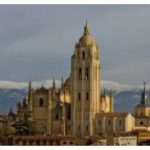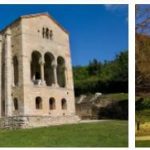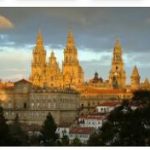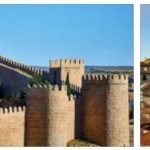The pearl of Moorish Spain made history from the 9th century: It was considered a symbol for the coexistence of religions and for the high cultural, artistic and scientific status of that time. After the Reconquista in the 13th century, the Catholic kings of Castile converted the Mezquita of Córdoba into a cathedral. The highlights of the old town are the Alcázar, the Bishop’s Palace, the Jewish quarter and the Arab bridgehead fortress La Calahorra.
Cordoba: facts
| Official title: | Mosque-Cathedral and Cordoba Old Town |
| Cultural monument: | once rival of Damascus, Constantinople and Baghdad with 300 mosques and countless palaces; Old town with the 19-aisled Mezquita converted into a cathedral, a mosque that was built on the site of a Janus temple; the Alcázar de los Reyes Cristianos, the Palacio Episcopal (16th century), the Jewish quarter behind the Puerta de Almodóvar and the crenellated Torre Fortaleza de la Calahorra |
| Continent: | Europe |
| Country: | Spain, Andalusia |
| Location: | Cordoba |
| Appointment: | 1984, expanded in 1994 |
| Meaning: | “Constantinople of the West”, pearl of Moorish Spain and icon of the Reconquista |
Cordoba: history
| 152 BC Chr. | Foundation of a Roman settlement in Corduba |
| 711 | Captured by Berber troops |
| 756 | Residence of Abd ar-Rahman I. |
| 785-96 | first construction of the mezquita using ancient columns |
| 833-48 | Extension of the Mezquita by eight bays to the south |
| 10th century | Bloom time among the Umayyads |
| 962-66 | Extension of the Mezquita by twelve yokes |
| 987-90 | Expansion of the Mezquita by eight ships |
| 1236 | Conquered by the army of Ferdinand III, called the Saint |
| 1377 | Puerta de Perdón |
| 1486 | Christopher Columbus’ reception by the Catholic Kings in the Alcázar |
| 1523 | Cathedral set in Mezquita |
Orient in Occident
Orient in Occident… hardly any other Spanish city reminds of the time when the rule of the Orient extended from Damascus to the Iberian Peninsula. In 711 Muslim armies were brought across from North Africa and captured Spain in a coup. The Umayyad prince Abd ar-Rahman I made Cordoba the center of his emirate “Al-Andalus”. An epoch of unprecedented prosperity began. Thanks to ingenious irrigation methods, the parched Campiña was transformed into a flourishing area under the new rulers. Trade and handicrafts experienced an enormous boom. Cordoba developed into a center for culture and science, the wealthiest and most important city in Europe.
The power and productivity of Arab culture were reflected in building activity that is still visible today. Casco Viejo, according to a2zgov, the largest old town center in Spain in terms of area, is magic turned into stone. Behind the white city walls, hardly anything has changed in the basic Moorish structure. The narrow alleys between the cubes of houses form a branching labyrinth with squares, patios and arcades. City villas with wrought-iron balconies lead into the Jewish quarter and the synagogue that has been preserved. The tolerant attitude of mind in the emirate allowed a peaceful coexistence of Muslims, Jews and Christians – a hardly imitated civilizing achievement and the basis for Cordoba’s rise.
The Moors called their city “City of Miracles”. One of the marvels of its architecture is the Mezquita, which is the only mosque in Spain to have been spared the destructiveness of Christian Reconquista warriors. The simple exterior hides the splendor inside. Through the »Gate of Forgiveness« and the »Orangenhof« one arrives at the large prayer hall with its column forest of 856 marble columns and red and white striped, double horseshoe arches. A breathtaking display of elegance built on the austerity of geometry. Since the Koran stipulated a ban on images, the Muslim artists covered walls, portals and domes with a variety of ornamental patterns, abstract, geometric and vegetable motifs as well as Arabic characters with great attention to detail.
The Muslim sanctuary, the prayer niche, forms an octagonal star and points towards Mecca at the end of the central nave. It is vaulted by a high dome, elaborately decorated with reliefs and mosaics, under which the Imam recited the suras of the Koran. The acoustics were so excellent that the believers could still hear his words in the back rows of the prayer hall.
The numerous extensions to the original building are barely noticeable. Because with the growth of the city, more and more prayer places had to be created under the roof of the mosque. The subsequent emirs and caliphs, however, preserved the architectural style, so that the prayer hall looks like a gigantic one-off piece. With the collapse of the Caliphate of Cordoba at the beginning of the 11th century, the mosque was completed in its current appearance.
After the city was conquered by the army of Ferdinand the Holy, the prevailing tolerance did not change. It was ultimately thanks to her that the Mezquita was the only mosque in Spain to initially be spared the destruction of the Christians. Not far from the mosque, the new kings built their fortress-like Alcázar on the remains of an oriental bathing complex, from which they operated the overthrow of the last Moorish bastion of Granada.
The Mezquita remained untouched until 1523. In that year the clergy decided to send a striking symbol to the triumph of Christianity over Islam. Parts of the prayer hall were torn out to make room for a cathedral in the middle of the mosque. Since then, the massive cathedral has formed an unmistakable foreign body in the magic forest of columns and arches.

